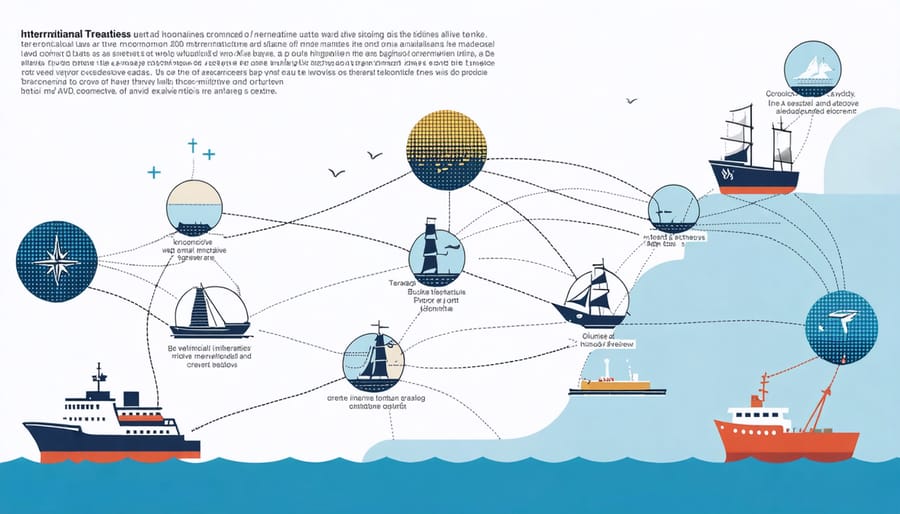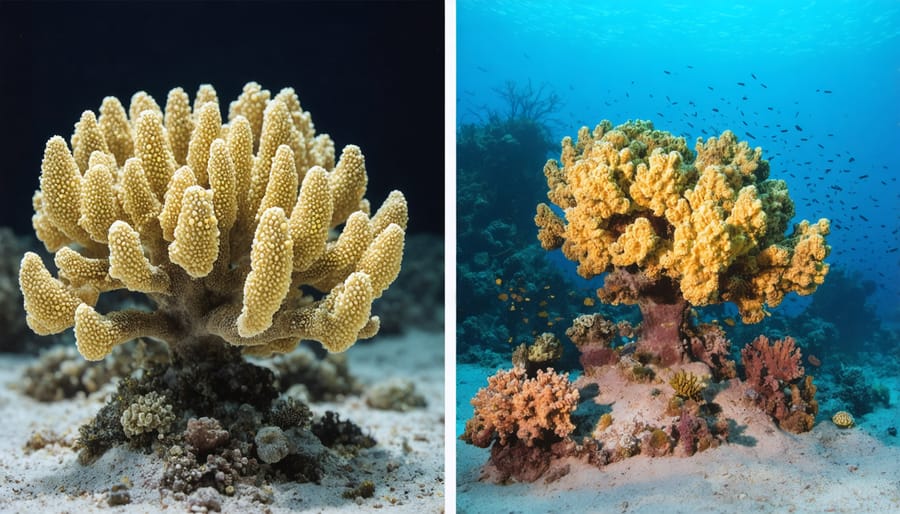
In the dynamic intersection of law and conservation, wildlife conservation lawyers stand as crucial defenders of Earth’s most vulnerable species. These specialized legal professionals combine deep ecological knowledge with legal expertise to protect endangered animals, preserve critical habitats, and enforce environmental regulations across global ecosystems. Operating within a complex web of international treaties, national laws, and local ordinances, they tackle challenges ranging from illegal wildlife trafficking to habitat destruction.
As climate change and human activities increasingly threaten biodiversity, wildlife conservation lawyers have emerged as essential advocates in the fight to protect our planet’s natural heritage. They work alongside scientists, conservation organizations, and government agencies to draft legislation, litigate environmental violations, and develop innovative legal strategies for species protection. Their expertise extends beyond traditional courtroom advocacy to include policy development, international treaty negotiations, and community-based conservation initiatives.
These legal champions not only defend individual species but also work to strengthen the fundamental frameworks that govern wildlife protection worldwide. Through their efforts, they help ensure that future generations will inherit a world where magnificent creatures continue to roam wild and free, maintaining the delicate balance of our global ecosystems.
The Unique Role of Marine Conservation Attorneys
Core Competencies and Specializations
Wildlife conservation lawyers must possess a unique blend of legal expertise and environmental science knowledge. A Juris Doctor (J.D.) degree and bar admission are fundamental requirements, typically complemented by specialized coursework in environmental law, natural resources law, and administrative law. Many successful practitioners also hold undergraduate degrees in environmental science, biology, or related fields.
Key competencies include thorough understanding of major environmental legislation such as the Endangered Species Act, Marine Mammal Protection Act, and Clean Water Act. Proficiency in administrative law procedures is crucial, as these lawyers frequently interact with government agencies and regulatory bodies.
Specialized training often encompasses:
– International environmental law and treaties
– Scientific methodology and research interpretation
– Policy analysis and development
– Negotiation and dispute resolution
– Grant writing and nonprofit management
Professional development typically involves maintaining membership in environmental law associations, attending specialized workshops, and staying current with evolving environmental regulations and scientific research. Many wildlife conservation lawyers also develop expertise in specific ecosystems or species groups, allowing them to better serve their clients and causes.
Daily Challenges and Responsibilities
Wildlife conservation lawyers face diverse challenges in their daily work, from reviewing environmental impact assessments to representing conservation organizations in court. A typical day might begin with analyzing satellite data showing illegal fishing activities in protected marine areas, followed by drafting legal documents to support enforcement actions.
These attorneys regularly collaborate with marine scientists to build strong cases against environmental violations. For instance, they might work with cetacean experts to document the impact of underwater noise pollution on whale populations or partner with coral reef specialists to assess damage from illegal anchoring practices.
Legal professionals in this field often juggle multiple cases simultaneously. They may start their morning negotiating with government agencies about expanding marine protected areas, spend the afternoon preparing testimony for a case involving endangered sea turtle habitat protection, and end their day reviewing international treaties affecting migratory marine species.
Emergency response is another crucial aspect of their work. When environmental disasters occur, such as oil spills or mass stranding events, these lawyers must rapidly mobilize to ensure proper legal protocols are followed and evidence is properly documented for potential litigation.

Key Legal Frameworks in Marine Conservation
International Maritime Laws
Wildlife conservation lawyers working in maritime contexts must navigate a complex web of environmental international agreements that protect marine species and their habitats. Key frameworks include the United Nations Convention on the Law of the Sea (UNCLOS), which establishes fundamental principles for marine resource management and conservation, and the Convention on International Trade in Endangered Species of Wild Fauna and Flora (CITES), which regulates wildlife trade across borders.
The International Convention for the Regulation of Whaling provides essential protections for cetaceans, while regional fisheries management organizations (RFMOs) establish specific regulations for commercial fishing activities. These agreements are supplemented by the Convention on Biological Diversity (CBD), which promotes sustainable use of marine resources and protection of critical habitats.
Maritime lawyers must also work within the framework of the International Maritime Organization (IMO) conventions, particularly those addressing vessel-based pollution and shipping lanes in sensitive marine areas. The Convention on the Prevention of Marine Pollution (MARPOL) sets standards for waste management and pollution prevention at sea.
Recent developments include the High Seas Treaty, which aims to protect biodiversity in international waters beyond national jurisdiction. This groundbreaking agreement creates new opportunities for conservation lawyers to advocate for marine protected areas and sustainable resource management in previously unregulated waters.
Success in maritime conservation law requires understanding how these various treaties interact and complement each other, as well as how they can be effectively enforced within different jurisdictions. Lawyers must stay current with amendments and new protocols while working collaboratively with international partners to ensure comprehensive protection of marine wildlife.

National Marine Protection Acts
National marine protection acts form the cornerstone of ocean wildlife conservation efforts worldwide. In the United States, the Marine Mammal Protection Act (MMPA) of 1972 stands as a pioneering piece of legislation that has inspired similar laws globally. This comprehensive act prohibits the taking, harassment, or disturbance of marine mammals in U.S. waters and by U.S. citizens on the high seas.
Australia’s Environment Protection and Biodiversity Conservation Act 1999 (EPBC Act) provides robust protection for marine species and their habitats, while Canada’s Oceans Act and Species at Risk Act work in tandem to safeguard marine biodiversity. The effectiveness of these laws relies heavily on dedicated marine species protection enforcement teams and the legal professionals who support them.
Wildlife conservation lawyers play a crucial role in interpreting and applying these acts, often working closely with government agencies, NGOs, and scientific organizations. They help develop regulations, ensure compliance, and prosecute violations that threaten marine ecosystems. For instance, these legal experts frequently handle cases involving illegal fishing practices, habitat destruction, and marine mammal harassment.
Recent amendments to these acts have strengthened protection measures, particularly in response to emerging threats like plastic pollution and climate change impacts. Many countries have also established marine protected areas (MPAs) through specific legislation, creating sanctuaries where marine life can thrive under enhanced legal protection.
The success of these acts often depends on international cooperation, as marine species don’t recognize national boundaries. Wildlife conservation lawyers frequently work across borders, helping to coordinate enforcement efforts and ensure consistent protection standards across different jurisdictions.
Success Stories in Marine Legal Protection
Landmark Cases
Several landmark cases have shaped the landscape of wildlife conservation law and established crucial precedents for protecting marine species. The 1972 Tennessee Valley Authority v. Hill case, involving the endangered snail darter, set a powerful precedent for prioritizing species protection over economic development. This case demonstrated that even small, seemingly insignificant species deserve legal protection under the Endangered Species Act.
In 2015, the Natural Resources Defense Council v. Pritzker case revolutionized our approach to marine mammal protection. The ruling required the Navy to limit sonar testing in critical whale habitats, establishing that military activities must consider wildlife impact. This decision has since influenced numerous cases involving marine acoustic disturbance.
The Center for Biological Diversity v. EPA (2017) marked another significant victory, compelling the Environmental Protection Agency to evaluate pesticides’ effects on endangered marine species before approval. This ruling strengthened the connection between terrestrial activities and marine ecosystem protection.
More recently, the 2019 WildEarth Guardians v. Bernhardt case established stricter requirements for considering climate change impacts in endangered species protection plans. This decision has become particularly important for protecting coral reef ecosystems and arctic marine mammals affected by warming oceans.
These cases demonstrate how dedicated wildlife conservation lawyers have shaped environmental protection through strategic litigation, creating lasting impacts on marine conservation policy and practice.
Impact on Marine Species Recovery
Legal action spearheaded by wildlife conservation lawyers has played a pivotal role in the recovery of numerous marine species. The successful protection of the North Atlantic right whale serves as a compelling example, where litigation led to the implementation of vessel speed restrictions and fishing gear modifications, resulting in a 80% reduction in whale entanglements since 2017.
In California, legal advocacy has been instrumental in establishing protected areas for sea otters, leading to their population growth from just 50 individuals in 1938 to over 3,000 today. These efforts demonstrate how strategic marine biodiversity protection through legal channels can yield remarkable results.
The Hawaiian monk seal recovery program showcases another triumph, where legal intervention secured critical habitat designation and enforced fishing restrictions. This resulted in the first population increase in decades, with numbers rising from 1,100 to 1,400 seals between 2014 and 2021.
Perhaps most notably, litigation efforts to protect coral reefs in the Florida Keys led to groundbreaking regulations on water quality and coastal development. These measures have facilitated a 23% increase in coral cover since 2015 and created a blueprint for reef protection worldwide.
Legal action has also been crucial in establishing marine protected areas (MPAs), with lawyers successfully arguing for the expansion of no-take zones and enhanced enforcement measures, providing safe havens for countless marine species to thrive.

Future Challenges and Opportunities
Emerging Legal Challenges
Wildlife conservation lawyers today face unprecedented challenges as emerging threats to biodiversity intersect with rapidly evolving technologies and global environmental changes. Climate change has introduced complex legal questions about species protection across shifting habitats and international boundaries, requiring innovative approaches to existing conservation laws.
The rise of advanced technologies like drones and satellite monitoring has created new opportunities for wildlife protection but also raised privacy and jurisdiction concerns. Lawyers must now navigate the legal implications of using these tools while ensuring compliance with existing regulations and developing new frameworks for their implementation.
Biotechnology advances, including genetic modification and de-extinction possibilities, present novel legal and ethical challenges. Conservation lawyers are working to develop regulations that address these emerging technologies while protecting ecosystem integrity and genetic diversity.
The expansion of renewable energy infrastructure, while crucial for fighting climate change, has created conflicts with wildlife protection. Lawyers are developing creative solutions to balance clean energy development with habitat preservation, particularly for migratory species and marine wildlife affected by offshore wind farms.
Additionally, the growing illegal wildlife trade on social media and dark web platforms requires new legal strategies and international cooperation. Conservation lawyers are pioneering approaches to combat digital wildlife trafficking while working within existing legal frameworks and pushing for updated legislation that addresses these modern challenges.
These emerging issues demand constant adaptation and innovation from wildlife conservation lawyers, who must stay ahead of technological developments while ensuring effective species protection in an increasingly complex world.
Advancing Marine Protection
The future of marine conservation law presents exciting opportunities for legal professionals dedicated to protecting our oceans. As climate change and human activities continue to threaten marine ecosystems, wildlife conservation lawyers are developing innovative ocean advocacy strategies to address emerging challenges.
One promising direction is the development of international frameworks for protecting marine biodiversity in areas beyond national jurisdiction. Lawyers are working to strengthen these agreements, ensuring comprehensive protection for species that migrate across international waters. Additionally, there’s growing emphasis on incorporating indigenous knowledge and rights into marine conservation legislation, creating more inclusive and effective protection measures.
Technology is also reshaping marine conservation law. Satellite monitoring, DNA tracking, and artificial intelligence are providing new tools for enforcement and evidence gathering. Wildlife conservation lawyers are learning to leverage these technologies in legal proceedings, making cases stronger and more data-driven.
The rise of blue carbon initiatives presents another frontier. Lawyers are helping develop legal frameworks to protect and restore coastal ecosystems like mangroves and seagrass beds, which play crucial roles in carbon sequestration. These projects often combine conservation goals with climate change mitigation, creating innovative legal precedents.
Looking ahead, opportunities exist for lawyers to specialize in emerging areas such as deep-sea mining regulation, plastic pollution prevention, and sustainable fisheries management. The field increasingly demands professionals who can balance environmental protection with sustainable resource use while ensuring equitable access to marine resources for coastal communities.
The role of wildlife conservation lawyers in protecting marine ecosystems cannot be overstated. These dedicated legal professionals serve as the vital bridge between scientific understanding and policy implementation, ensuring that our oceans and their inhabitants receive the protection they deserve. Through their expertise in environmental law, international treaties, and conservation strategies, they continue to shape the future of marine biodiversity protection.
As we face increasing challenges from climate change, pollution, and habitat destruction, the need for skilled wildlife conservation lawyers becomes even more critical. Their work not only helps preserve endangered species and protect vital marine habitats but also ensures sustainable practices for future generations.
You can support marine conservation legal efforts in several ways. Consider volunteering with environmental organizations, supporting legal advocacy groups focused on marine protection, or pursuing education in environmental law. Even small actions, such as staying informed about marine conservation issues and participating in public comment periods for environmental regulations, can make a significant difference.
The future of marine conservation depends on the collaborative efforts of lawyers, scientists, policy makers, and engaged citizens. By working together and supporting legal initiatives for marine protection, we can ensure that our oceans remain healthy and vibrant for generations to come. Whether you’re a student considering a career in environmental law or a concerned citizen looking to make a difference, there’s a role for everyone in the fight for marine conservation.
jessica
Ava Singh is an environmental writer and marine sustainability advocate with a deep commitment to protecting the world's oceans and coastal communities. With a background in environmental policy and a passion for storytelling, Ava brings complex topics to life through clear, engaging content that educates and empowers readers. At the Marine Biodiversity & Sustainability Learning Center, Ava focuses on sharing impactful stories about community engagement, policy innovations, and conservation strategies. Her writing bridges the gap between science and the public, encouraging people to take part in preserving marine biodiversity. When she’s not writing, Ava collaborates with local initiatives to promote eco-conscious living and sustainable development, ensuring her work makes a difference both on the page and in the real world.
